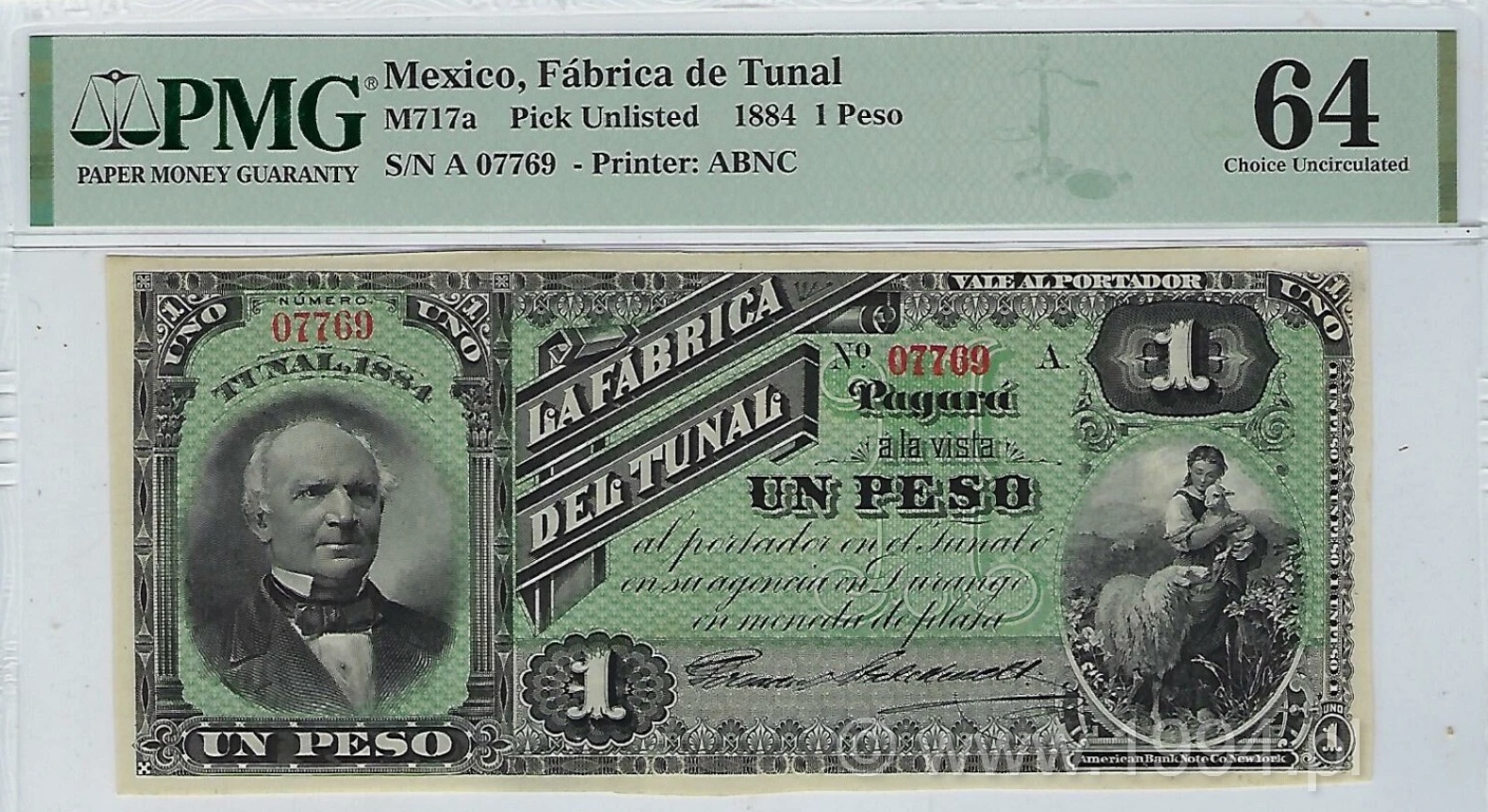Description and research notes
Context — Porfiriato industrial finance (1876–1911): In the 1880s, Mexico’s northern mining belt (Durango–Zacatecas–Coahuila) expanded under Porfirio Díaz’s pro-investment policies. Private companies routinely paid workers and contractors with bearer notes redeemable in silver on demand. These instruments sat between payroll scrip and banknotes: fully engraved, serialed, and legally payable al portador en moneda de plata, but issued by corporations rather than chartered banks.
Issuer — La Fábrica de Tunal: Period newspapers and gazettes place the Tunal estates and industrial works outside Durango city along the Tunal River. The enterprise is referenced in mining and agricultural reports as a mixed industrial operation supporting ore processing and local provisioning. The note’s formal payable text, control letter “A”, and five-digit serial (07769) match corporate-issue accounting rather than casual store credit.
Printer & contract — American Bank Note Company, New York: By 1884 ABNC held dominant Latin American engraving share. Contract work for non-bank clients was uncommon; most private Mexican scrip was lithographed locally. ABNC plates, lathework, and vignette library elevated Tunal’s note to national-bank quality, signaling the issuer’s scale and credit ambitions. The shepherd-with-lamb and dignitary portraits are stock ABNC vignettes chosen to communicate pastoral wealth and probity to a regional audience paid in silver.
Monetary setting — silver convertibility: Mexico was the world’s silver engine; wages and accounts were reckoned in coin. Tunal’s promise to pay in moneda de plata tied the note’s value to hard money at a time of tight rural liquidity. Corporate issues like this circulated locally until redeemed on payday or at the company office, then were canceled or destroyed — a built-in scarcity driver.
Catalog status — Pick Unlisted (M717a): The Standard Catalog omits corporate non-bank emissions; PMG therefore records the type as Pick Unlisted. Surviving examples are rare because issued notes were worked to death, while ABNC proofs stayed in archives. This example is fully issued and numbered, not an archival pull — a far scarcer survivor class.
Why it matters: (1) Industrial-finance document from Mexico’s modernization decade; (2) ABNC-engraved corporate currency — an outlier for private scrip; (3) Research cornerstone for mapping non-bank monetary ecosystems around Durango; (4) Best-of-type preservation at PMG 64 CU.
Research leads (for specialists): Search Durango state Memorias de Hacienda (1883–1886) and Boletín Minero for “Fábrica del Tunal/Tunal” mentions; consult ABNC job books for Mexican corporate accounts ca. 1883–1885; local press (El Estado de Durango) for payroll disputes/redemption notices. Provenance patterns suggest sporadic ABNC proof dispersals; issued pieces like this likely exited via office hoards or legal archives.
Condition & eye appeal: Crisp tint, deep plate etch, full margins, and bright paper support the PMG 64 Choice Uncirculated grade — unusually high for a note meant to circulate in rough industrial use.
